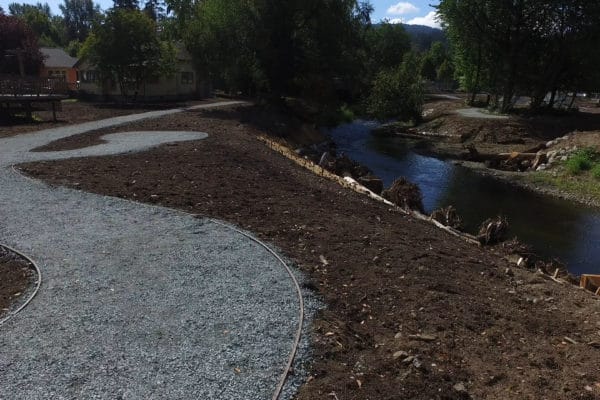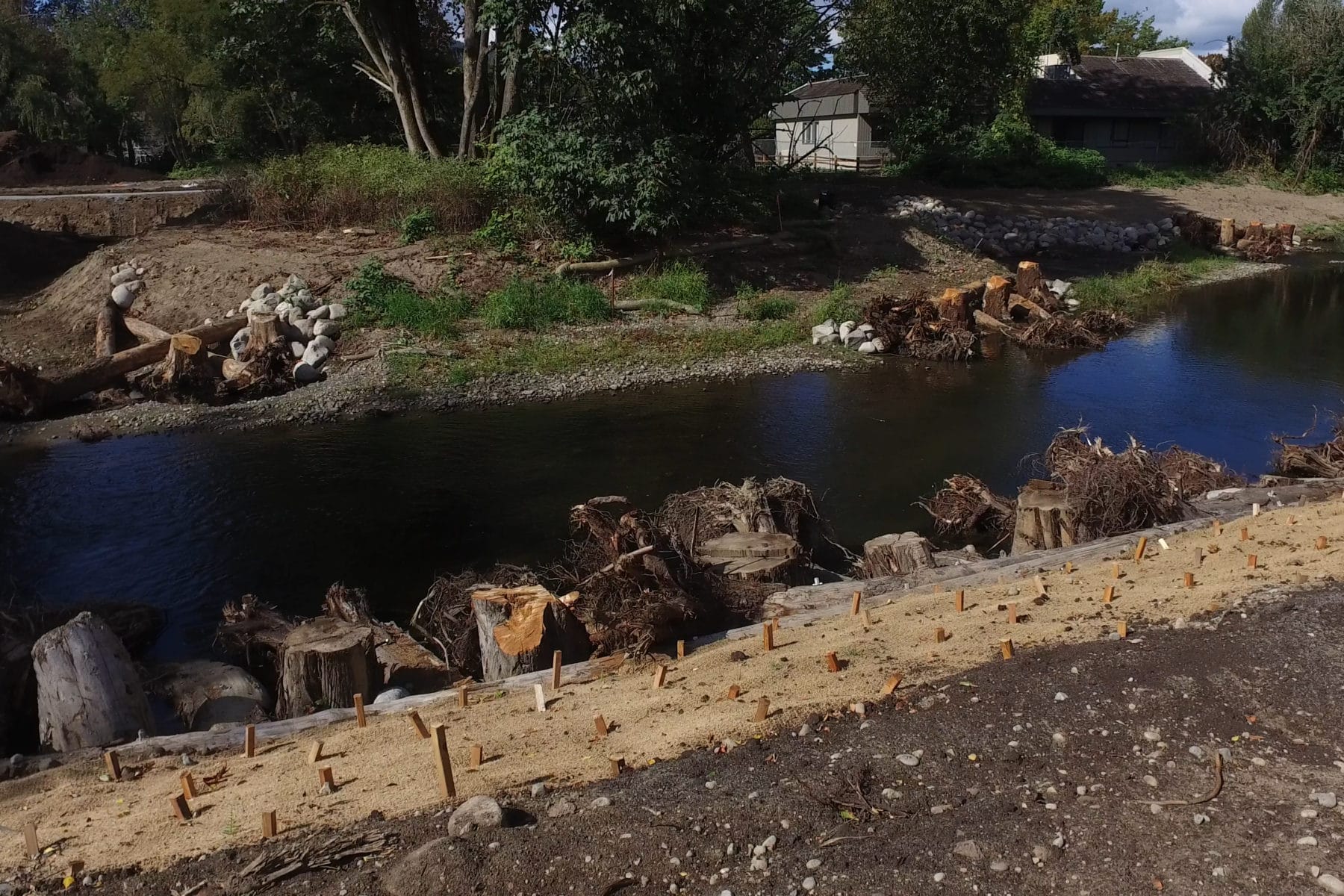New Park with Salmon Run Views
Issaquah has a new park! Salmon Run Nature Park, located behind Gilman Village and adjacent to Berntsen Park, adds to a growing network of connected public open spaces and healthy salmon habitat along Issaquah Creek. New gravel pathways allow residents to take a scenic stroll along Issaquah Creek and spot Chinook and Coho salmon as they return during their annual “salmon run” to spawn, after which the park was named.
Salmon Run Nature Park reflects the City Of Issaquah’s decades-long commitment to public access to natural areas and its commitment to reduce flooding and improve salmon habitat. The local community has also leaned in to help. Over the last ten years, thousands of local Greenway volunteers have contributed over 35,000 hours participating in these projects and learning about the importance of healthy ecosystems.

When the park was first acquired by the City, it was covered in giant mounds of Himalayan blackberry and Japanese knotweed, choking out the native plants that are needed for salmon recovery. These invasive species also clogged up views to the creek and kept visitors away. A major change was needed.
The City partnered with the Greenway Trust and landscape architecture firm The Watershed Company to restore 450 feet of habitat in the park. Over the last year, the mounds of invasive plants were removed and then The Watershed Company installed more than 100 logs and stumps to the creek to provide pools and refuge for salmon. Known as “large woody debris” in the restoration world, these trees replicate what would naturally be occurring along this creek, slowing down the water in key spaces to allow salmon to rest and spawn.

The next phase is to plant a variety of native trees and shrubs, which will strengthen the creek banks and add plant diversity—crucial for providing shade to the newly restored salmon habitat. During warmer months, unshaded stream habitat can become dangerously warm for salmon. According to the Washington State Department of Ecology, when water temperatures reach 63.5°F, salmon begin struggling to survive.
You can help! Over 9,000 native trees and shrubs now need to be planted at Salmon Run Park to complete the restoration. Tree planting volunteer events are scheduled for Saturday November 5th, and Saturday November 19th





